
This was my excuse for not being very active for a while; the bathroom above my shack was being re-done so I had to clear out everything. That was two years ago, so I need a new excuse.

a placeholder blog

This was my excuse for not being very active for a while; the bathroom above my shack was being re-done so I had to clear out everything. That was two years ago, so I need a new excuse.
Sort of. Steve must have sent this to ARRL.
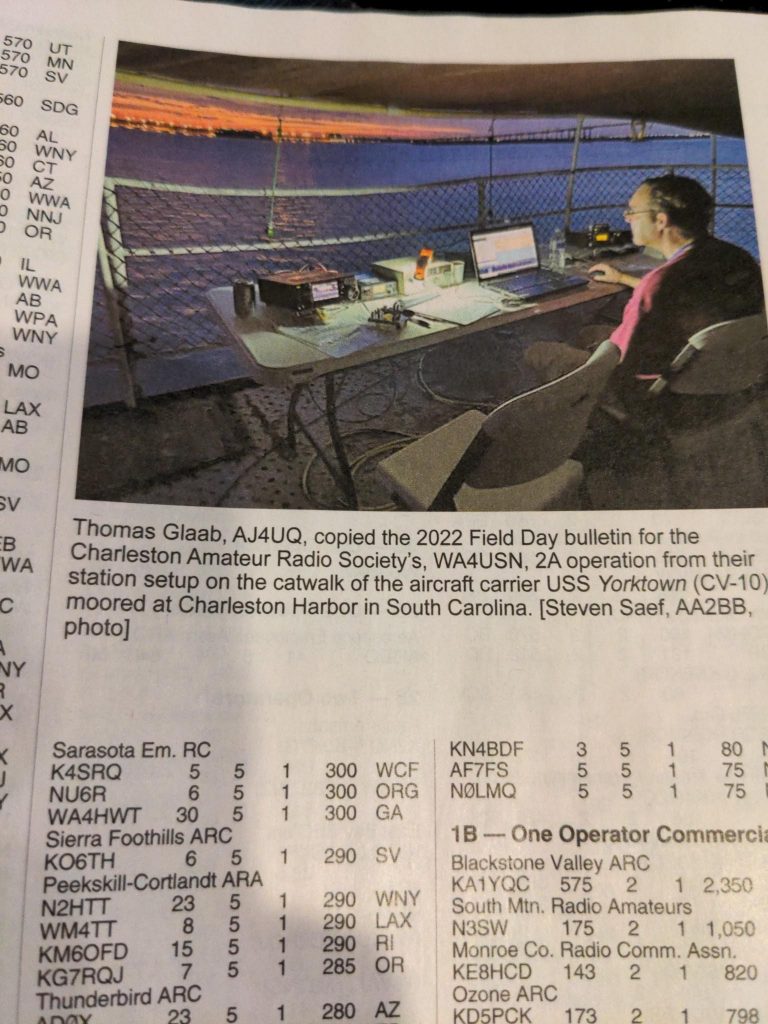
It’s the second time this operating position has been featured; AB4UG was shown in a picture highlighting its precariousness a few years ago.
It was back to the USS Yorktown with the Charleston ARS club this year, operating overnight once again. Brian, KN4EXJ, was Field Day Captain, and I did a lot of mentoring.
I showed up Saturday around 11am with the laptops for logging. We completed the setup for two emergency stations, and got on the air at 2pm. Surprisingly there were no squall lines coming through at the start, though we could see some activity off-shore.
On Saturday we had plenty of operators, so I just kept an eye on things. The CW operators took a break so I got on for a few minutes and made 32 FT8 contacts. Further digital activity was stopped when the magic smoke escaped from the bandpass filter and threatened to do the same to the antenna autotuner.
Sunday morning is my favorite time; the overnight operators are burned out and 15m starts to open. After working a few stations I set up and ran for 85 or so contacts in about 90 minutes until the day crew arrived.
The rest of my operating time was spent logging for the CW operators, giving me my annual immersion in fairly-fast code.
At 2pm Sunday we shut down and took down the site. Now to help Brian with the score reporting…
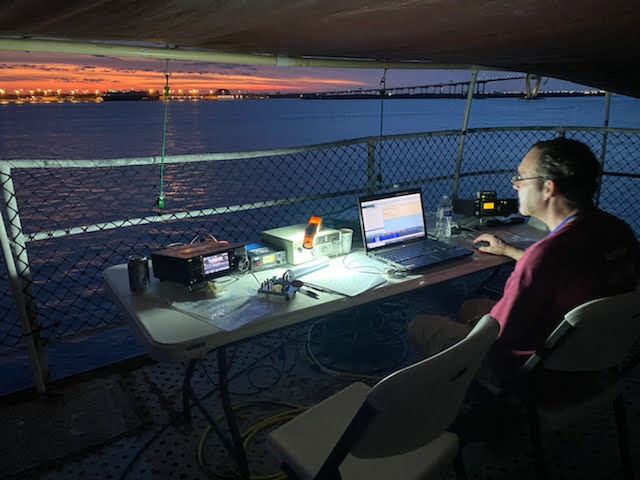
As a ham I’ve supported a number of public service events. I’ve done the Cooper River Bridge Run a bunch of times, the Charleston Marathon, IOP Connector Run, Iron Man Triathlon, and a bunch of smaller 10k runs.
My son likes to ride his bike all over, and we decided to do a one-day ride in the Bicycle Across South Carolina event this year. I asked the organizers if they had ham radio support, and they hooked me up with the Edgefield County Amateur Radio Club. They were happy to have a rider on the course with a radio, providing reports.

The ride was using the SCHEART Edgefield repeater, WR4EC, and hitting it with a 5W HT was no problem. I rode with the radio clipped to the back of my pants, and it was great listening to the net as I rode. Other riders heard it, and asked if I was part of the race committee.
I checked into the net and provided a few status reports. I think my biggest contribution was that several riders reported seeing an aggressive dog on part of the course; after riding that section I was able to report no signs of the dog.
Our short course (31 miles) only had one rest area, and I introduced myself to the operators there. It was fun being the supported party, and knowing what the hams saw on the course. When I got back to the start/finish line I checked out with Net Control. Aside from a few comments on how we used to ride more when we were younger, he thanked me and confirmed that it was helpful to have a rider with a radio.
Next week I’ll be back on the stationary side of the ride, supporting the MUSC LowVelo event. It will be better than usual since I’ll be able to understand the rider’s perspective as well.
It’s been another hot and humid summer, so I don’t have much motivation to go out and operate other than the QRP field activities. I went down to the neighborhood park for the NJQRP Skeeter Hunt in August, but there were too many thunderstorms in the area to operate. Between the thunder and static crashes, I couldn’t hear much. Another event where I got bonus points (social media post), but no QSO points 🙁
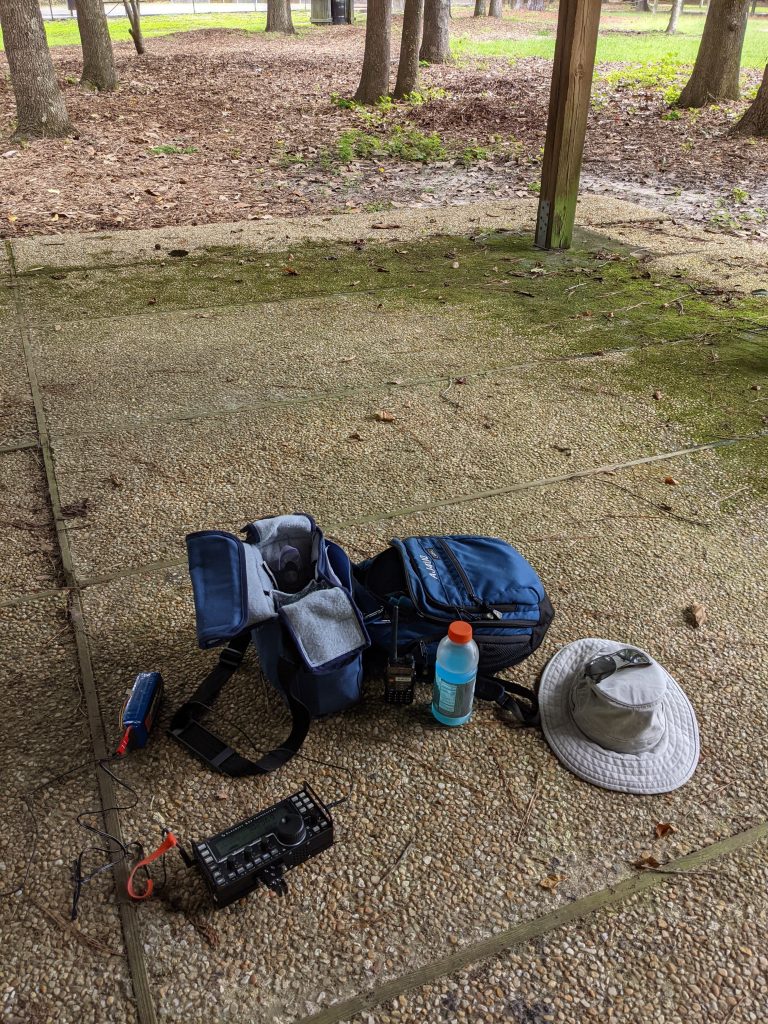
At home I’ve been watching FT8 on higher bands. My antenna gets into South America well on 15 and 10m, both of which have been opening lately. 17m lets me work Europeans. 12m is another that gets into Europe, but hasn’t been that busy lately.
On 20m there’s still quite a bit of QSB, but the band is supporting ragchew modes, and I’ve worked a few stations on PSK31. I prefer Olivia 8/250 because it’s better with fading. Just use RSID to help people identify your mode. I had a 20 minute QSO with a station in northern California last week before the band fell apart.
Today was the Adventure Radio Society annual Flight of the Bumblebees QRP event. I like to get out and play for a few hours in these; it’s a good excuse to get out and CW a little.
As usual I went to the city park in my neighborhood. I set up in the empty pavilion (no tables, sit on the floor with the bugs); I need to consider taking a picnic table by the softball field next time as nobody came to that end of the park. I also need to scout two riverfront parks that are an easy bike ride, to see if there are good options for mounting an antenna.
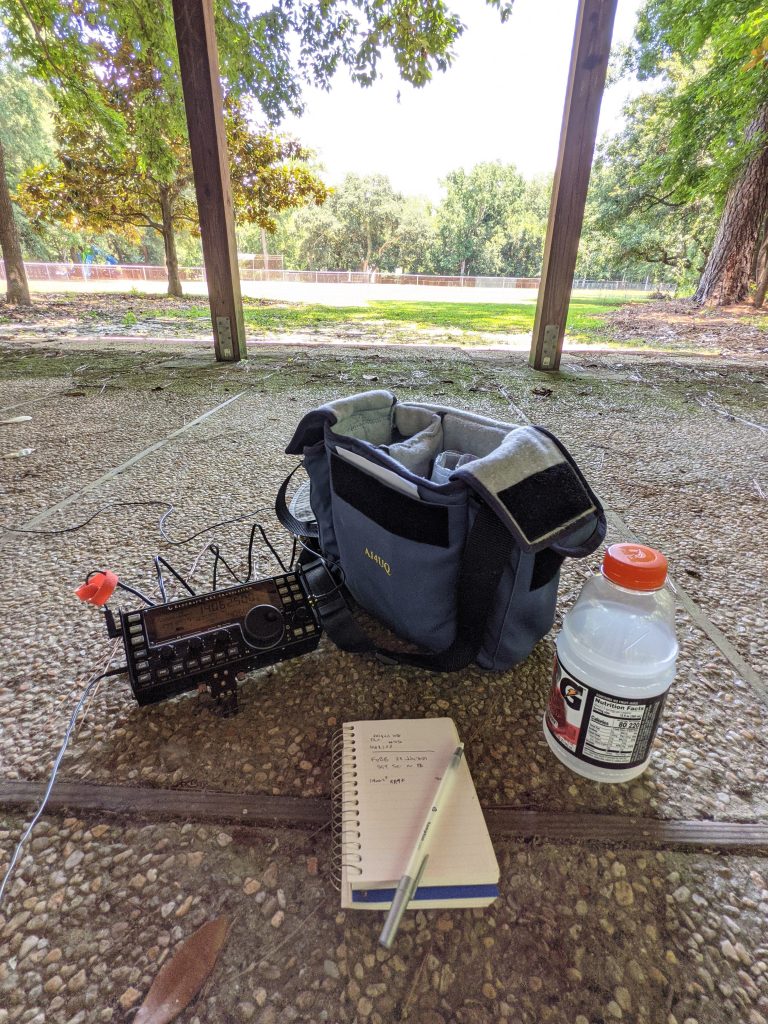
It was pushing 90F so I left the dog at home and brought a big bottle of Gatorade instead. Setup was uneventful, and I quickly found a mess of operators on top of each other at 14.060. Eventually things spread out and I made a few QSOs.
QSB was fairly fast, and I lost one QSO to QRM (someone started keying up almost on top of us). I worked Indiana, Illinois, and Missouri on 20m. Heard Tennessee, Massachusetts, and North Carolina on 40 but couldn’t work them. Heard a good call from Washington at the end but he disappeared immediately.
My wife and son dropped by to say hi, arriving just as I was in QSO. A tree branch fell shortly afterwards, fortunately not the one holding my EFHW.
After about 90 minutes operating I got tired of the bugs crawling all over me and my gear, so I packed up and walked home.
Thanks to the ARS for this event. Hopefully I’ll get a chance to scout out the riverfront parks before the NJQRP Skeeter Hunt next month.

I joined the Charleston ARS on the USS Yorktown once again, now that we’re able to meet in person. The panoramic shot above shows the digital/CW operating position under the tarp on the left as we were cleaning up (click through for VR version).
We got off to a slow start, as the usual 2pm start-of-FD thunderstorm failed to appear. We were 2A SC with one station dedicated to phone and the other swapping between CW and digital.
Couldn’t get the RTTY to decode initially, not that there’s much RTTY on FD any more. Got FT8 going and our operator made a handful of contacts.
AA2BB was our CW operator again, and I had the opportunity to log for him. Always good CW practice, and I was able to log many of his contacts without having to look at his notes. Steve wanted to run on 20m CW, which was a challenge, but we did well.
Sunday morning 10m opened up on phone and that’s where we spent most of our time. 15m FT8 was somewhat productive too. I got RTTY decode working, but there just wasn’t any action there.
I’m still not a huge fan of Field Day, but it was good to get out again.
I tried to do some RTTY on the KX3 for Field Day but the radio wouldn’t key up. Many months later I thought to look into it, and everything worked fine. Set up for PSK31 on 20m at 5w and got a qso with the Dominican Republic on the first call. Replied to an Olivia 8/250 call from Texas and wasn’t being heard well (qsb and qrm), then discovered my LIFePo battery was dead and the radio was chugging along on 8v from the internal AAs.
still not sure what happened on Field Day, but happy the equipment is ok.
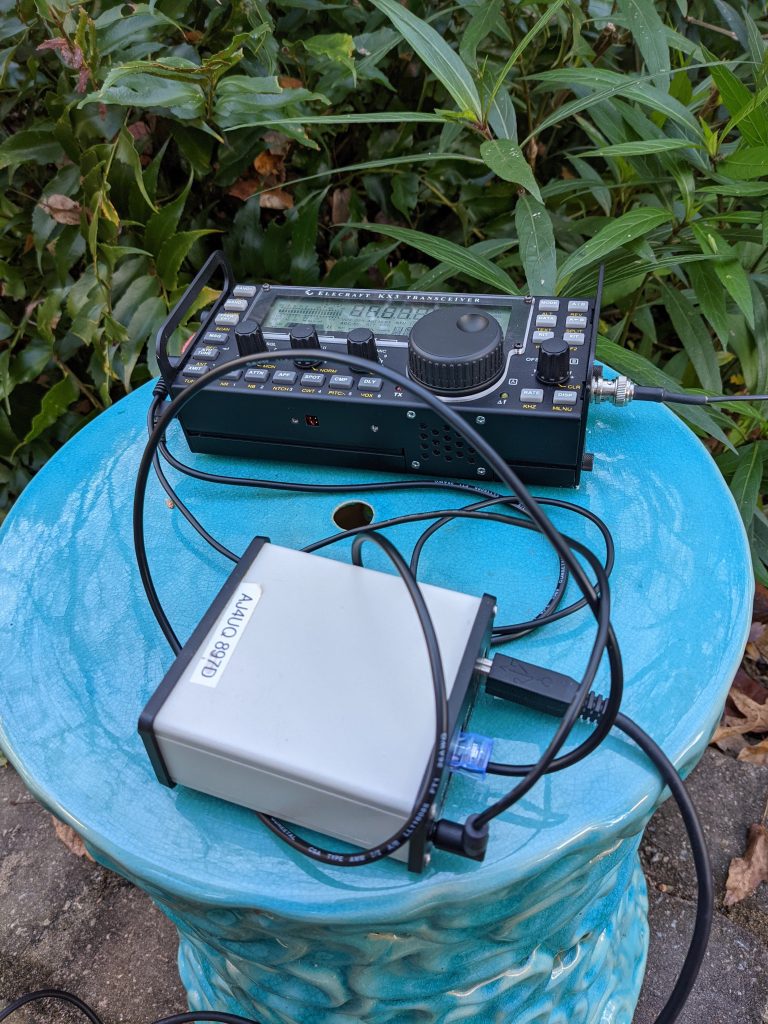
Worked All Twitter 2020, the ninth anniversary.
On the Thanksgiving before establishing her ham creds with an epic cross-country venture*, Connie @NR4CB announced a Twitter operating event. Thanksgiving week would become an opportunity for hams to arrange and make contacts over the air for fun. There’s Worked All States, and Worked All Continents, so why not Worked All hams on Twitter?
There are no prizes other than bragging rights and connecting with hams on another level. Since it’s not a contest, all bands and all modes are valid. AB4UG (@imabug) captured the spirit of #WATwitter on his blog. Here are the updated guidelines:
WATwitter Guidelines
This year the WATwitter Thanksgiving QSO party will take place between November 25-29, 2020. These are some guidelines proposed by Connie/NR4CB for the WATwitter Thanksgiving QSO Party
Who: Any licensed operator who also uses Twitter
Where: All bands, all modes. To let as many people as possible participate, use the portion of the band open to the most people, i.e. the technician portion of 10m, the general class portion of 20m, etc
Exchange: Your normal exchange plus your Twitter handle, especially if it’s not your call sign
Spotting: Self-spotting is practically required. Tweet your frequency, interact with people on Twitter, and get other people to meet you on the air at a specific time and frequency.
Hashtags: #WATwitter and either #hamr or #hamradio
Why: Connect with people using both social media and on the air
Have fun! Log your contacts, tweet your tallies to others, but there are no scores or awards.
So make the best of being stuck at home this year. Or invite your guests into your shack to share the fun. It’s always fun to throw a #WATwitter into your QSO throughout the year as you work another Twitter buddy on the air.
See past activity on Twitter.
* Connie didn’t have a blog at the time of her journey, and what she put together afterwards is gone. Here are some of her memories about that time:
I can tell you how it started. Pretty sure it was Thanksgiving 2010. I was first licensed in June 2010, and I was on vacation from my job that I was then later laid off from in April 2011. A year later I was in school full time but still had time off over Thanksgiving. Went home again, but this time with a plan to do #WATwitter instead of its being spontaneous. My mom was still alive then. She died in Feb 2012. Then worked toward planning that road trip, starting the blog, etc.
All bands. All modes. Starts Wednesday the day before the US Thanksgiving holiday. Goes through the Sunday after the US Thanksgiving holiday. Exchange includes your Twitter name. Goal is to turn online friends into on the air friends.
One thing I remember somebody telling me on Twitter when I’d go home to dad’s house (and have access to an HF rig) is that “everybody wants to work NR4CB. She’s more rare than North Korea.” Still cracks me up. Dad is WA4BXC.
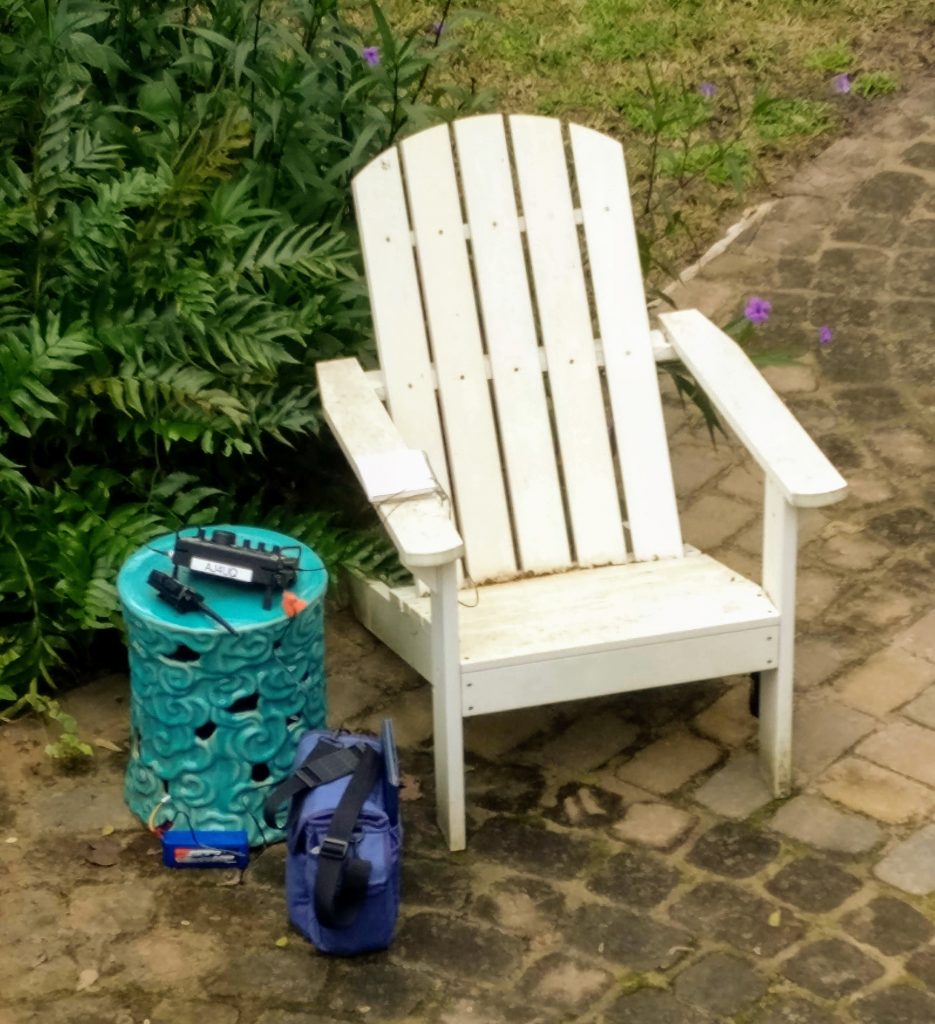
There were a few QRP events this weekend so I set up an EFHW in the back yard and gave it a try. Saturday afternoon was the Leaf Peeper contest, but all I heard was California QSO party (“CQP”) and some SKCC activity. No LP heard. Sunday evening was the Peanut Power Sprint, and as it was after the CQP ended, those signals were booming on 20 and 40m. It was getting dark and the skeeters were coming out so I made a few QSOs then packed it up.
The QRP events are fun as the operators are accommodating and the code is copyable. I only made a few mistakes but didn’t need any fills. Thanks to W3ATB and NOGA QRP for organizing this weekend’s fun.